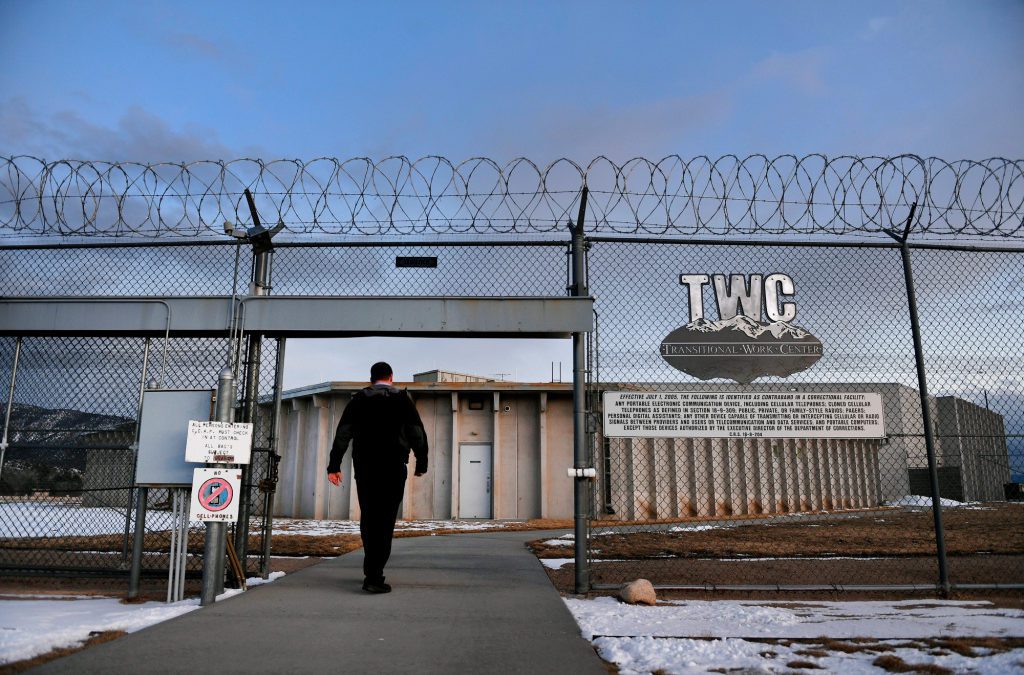Colorado was near the top when it came to testing its prison inmates for COVID-19, but it’s not clear that helped reduce deaths behind bars.
A study from the National Commission on COVID-19 and Criminal Justice found that people incarcerated in state prisons were more likely to die of COVID-19 than free people in all but four states: Vermont, New York, Arizona and Rhode Island. States that did more testing tended to have smaller gaps, though.
Colorado ranked fifth in tests performed compared to the state’s prison population. It was 24th, however, on the number of deaths among prisoners compared to deaths in the general population. The Colorado Department of Corrections and an expert in prison health questioned the way the study compared deaths.
The study can’t prove that increased testing caused lower death rates, because states also differed in how effectively they quarantined new prisoners and encouraged or enforced mask-wearing and social distancing, said Kevin Schnepel, who analyzed the data and is an associate professor of economics at Simon Fraser University in Vancouver.
A few states also prioritized inmates for vaccination, while others, including Colorado, vaccinated prisoners based on age and chronic conditions. About 56% of prisoners and half of prison staff had been vaccinated as of Wednesday, said Annie Skinner, spokeswoman for the Colorado Department of Corrections.
Anecdotally, Colorado and other states reported a significant portion of prisoners who tested positive didn’t have symptoms, Schnepel said. While that’s good for those individuals, it means that relying on testing only those who look sick will miss cases, giving the virus a chance to spread to more-vulnerable prisoners, he said.
“Trying to test everyone is potentially an important strategy,” he said.
Testing is important, but it’s only useful if facilities that use it to make good decisions about housing prisoners, said Dr. Carlos Franco-Paredes, an infectious diseases specialist at UCHealth who works with incarcerated populations. When someone in a unit tests positive, it’s important to quarantine the rest of the unit, and to temporarily isolate prisoners who have the virus, he said.
“What matters is not the number of tests, but how do you use that information from testing,” he said.
In the beginning of the pandemic, when testing was scarce, jails allowed prisoners who had been exposed but weren’t showing symptoms to mix with the unexposed population, Franco-Paredes said. As the science developed and showed asymptomatic people could spread the virus, it became clear screening for a fever wasn’t a substitute for frequent testing, he said.
The Colorado Department of Corrections tests inmates who are showing symptoms, contacts of people who tested positive and those who recently arrived or are preparing for release or a court date, Skinner said. Medical staff and the Colorado Department of Public Health and Environment work together to determine how often to test other inmates, she said. As of last week, the department had performed an average of 10 tests per inmate, though they weren’t evenly distributed.
Staff members also take a test looking for the virus’s genetic material weekly, Skinner said, as well as rapid tests daily. The study couldn’t draw conclusions about how testing affected prison staff, because states didn’t report that information in comparable ways.
The study found prisoners in Colorado were about three-and-a-half times more likely to die of COVID-19 than free people, by comparing the number of deaths among prisoners and free people to their population numbers. The Colorado Department of Corrections reported 29 prisoners have died of COVID-19 as of Tuesday. The statewide death toll from COVID-19 is 6,316.
Prisoners have more chronic conditions than the general public, and long sentences in a high-stress environment appear to essentially speed up aging by wearing on the blood vessels, which would make them vulnerable to COVID-19 and could raise death rates, Franco-Paredes said. He questioned comparing deaths to the total population, however, saying it makes more sense to compare the percentage of infected people who died.
Skinner said 0.3% of prisoners who tested positive died from the virus, which is lower than the nationwide mortality rate. About 1.3% of people who tested positive in Colorado died of COVID-19.
“Every death from this insidious disease is a loss, and deeply impacts the person’s loved ones, and our community as a whole,” Skinner said in a statement.
Schnepel said that comparing the percentage of infected people who died can be misleading, however, because people in the general community were less likely to be tested regularly than prisoners. That means states may have missed mild cases in their overall populations, making the virus look more deadly for people who aren’t incarcerated than for those who are, he said.
Regardless of how you look at the death data, it’s clear that deaths could have been avoided if the state better managed COVID-19, especially in prisons, Franco-Paredes said.
“They should not be be celebrating this as a low case fatality rate, because a lot of these deaths were preventable,” he said.
This content was originally published here.

